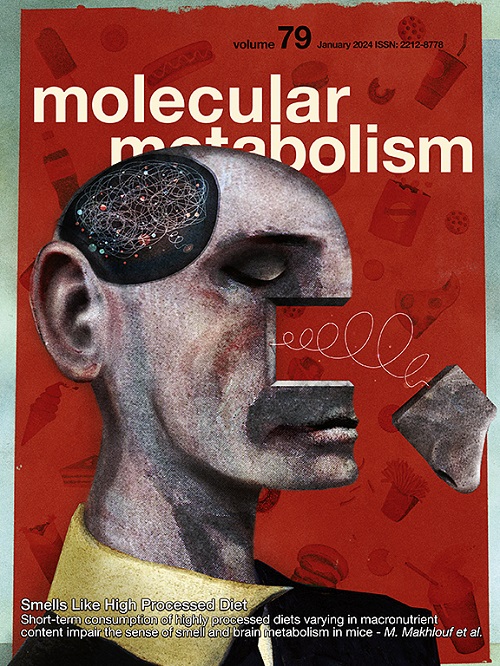Macrophages on the run: Exercise balances macrophage polarization for improved health
IF 7
2区 医学
Q1 ENDOCRINOLOGY & METABOLISM
引用次数: 0
Abstract
Objective
Exercise plays a crucial role in maintaining and improving human health. However, the precise molecular mechanisms that govern the body’s response to exercise or/compared to periods of inactivity remain elusive. Current evidence appears to suggest that exercise exerts a seemingly dual influence on macrophage polarization states, inducing both pro-immune response M1 activation and cell-repair-focused M2 activation. To reconcile this apparent paradox, we leveraged a comprehensive meta-analysis of 75 diverse exercise and immobilization published datasets (7000+ samples), encompassing various exercise modalities, sampling techniques, and species.
Methods
75 exercise and immobilization expression datasets were identified and processed for analysis. The data was analyzed using boolean relationships which uses binary gene expression relationships in order to increase the signal to noise achieved from the data, allowing for the use of comparison across such a diverse set of datasets. We utilized a boolean relationship-aided macrophage gene model [1], to model the macrophage polarization state in pre and post exercise samples in both immediate exercise and long term training.
Results
Our modeling uncovered a key temporal dynamic: exercise triggers an immediate M1 surge, while long term training transitions to sustained M2 activation. These patterns were consistent across different species (human vs mouse), sampling methods (blood vs muscle biopsy), and exercise type (resistance vs endurance), and routinely showed statistically significant results. Immobilization was shown to have the opposite effect of exercise by triggering an immediate M2 activation. Individual characteristics like gender, exercise intensity and age were found to impact the degree of polarization without changing the overall patterns. To model macrophages within the specific context of muscle tissue, we identified a focused gene set signature of muscle resident macrophage polarization, allowing for the precise measurement of macrophage activity in response to exercise within the muscle.
Conclusions
These consistent patterns across all 75 examined studies suggest that the long term health benefits of exercise stem from its ability to orchestrate a balanced and temporally-regulated interplay between pro-immune response (M1) and reparative macrophage activity (M2). Similarly, it suggests that an imbalance between pro-immune and cell repair responses could facilitate disease development. Our findings shed light on the intricate molecular choreography behind exercise-induced health benefits with a particular insight on its effect on the macrophages within the muscle.
奔跑中的巨噬细胞:运动平衡巨噬细胞极化,改善健康状况。
目的:运动在保持和改善人体健康方面发挥着至关重要的作用。然而,机体对运动或/与非运动时期相比的反应的确切分子机制仍然难以捉摸。目前的证据似乎表明,运动对巨噬细胞极化状态似乎具有双重影响,既能诱导促免疫反应的 M1 激活,又能诱导注重细胞修复的 M2 激活。为了调和这一明显的悖论,我们对已发表的 75 个不同的运动和固定数据集(7000 多个样本)进行了全面的荟萃分析,这些数据集涵盖了各种运动方式、取样技术和物种。使用布尔关系对数据进行分析,布尔关系使用二进制基因表达关系,以提高数据的信噪比,从而在如此多样的数据集之间进行比较。我们利用布尔关系辅助的巨噬细胞基因模型[1],对运动前和运动后样本中的巨噬细胞极化状态进行建模,包括即时运动和长期训练:结果:我们的模型发现了一个关键的时间动态:运动会立即引发 M1 激增,而长期训练则会过渡到持续的 M2 激活。这些模式在不同的物种(人类与小鼠)、采样方法(血液与肌肉活检)和运动类型(阻力与耐力)中都是一致的,并经常显示出具有统计学意义的结果。研究表明,静止不动与运动的效果相反,会立即引发 M2 激活。研究发现,性别、运动强度和年龄等个体特征会影响极化程度,但不会改变整体模式。为了在肌肉组织的特定环境中建立巨噬细胞模型,我们确定了肌肉常驻巨噬细胞极化的重点基因组特征,从而可以精确测量巨噬细胞对肌肉内运动的反应:结论:所有 75 项研究中的这些一致模式表明,运动对健康的长期益处源于其在促进免疫反应(M1)和修复性巨噬细胞活动(M2)之间协调平衡和时间调节相互作用的能力。同样,这也表明促免疫反应和细胞修复反应之间的失衡可能会促进疾病的发展。我们的研究结果揭示了运动对健康的益处背后错综复杂的分子机制,尤其是运动对肌肉中巨噬细胞的影响。
本文章由计算机程序翻译,如有差异,请以英文原文为准。
求助全文
约1分钟内获得全文
求助全文
来源期刊

Molecular Metabolism
ENDOCRINOLOGY & METABOLISM-
CiteScore
14.50
自引率
2.50%
发文量
219
审稿时长
43 days
期刊介绍:
Molecular Metabolism is a leading journal dedicated to sharing groundbreaking discoveries in the field of energy homeostasis and the underlying factors of metabolic disorders. These disorders include obesity, diabetes, cardiovascular disease, and cancer. Our journal focuses on publishing research driven by hypotheses and conducted to the highest standards, aiming to provide a mechanistic understanding of energy homeostasis-related behavior, physiology, and dysfunction.
We promote interdisciplinary science, covering a broad range of approaches from molecules to humans throughout the lifespan. Our goal is to contribute to transformative research in metabolism, which has the potential to revolutionize the field. By enabling progress in the prognosis, prevention, and ultimately the cure of metabolic disorders and their long-term complications, our journal seeks to better the future of health and well-being.
 求助内容:
求助内容: 应助结果提醒方式:
应助结果提醒方式:


